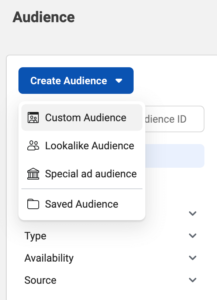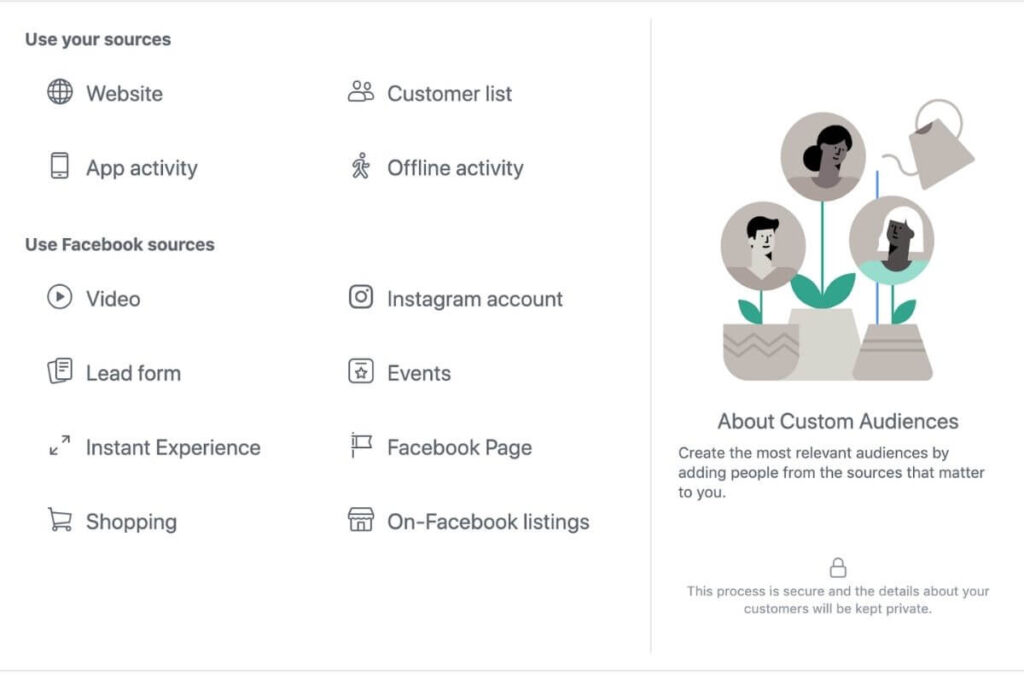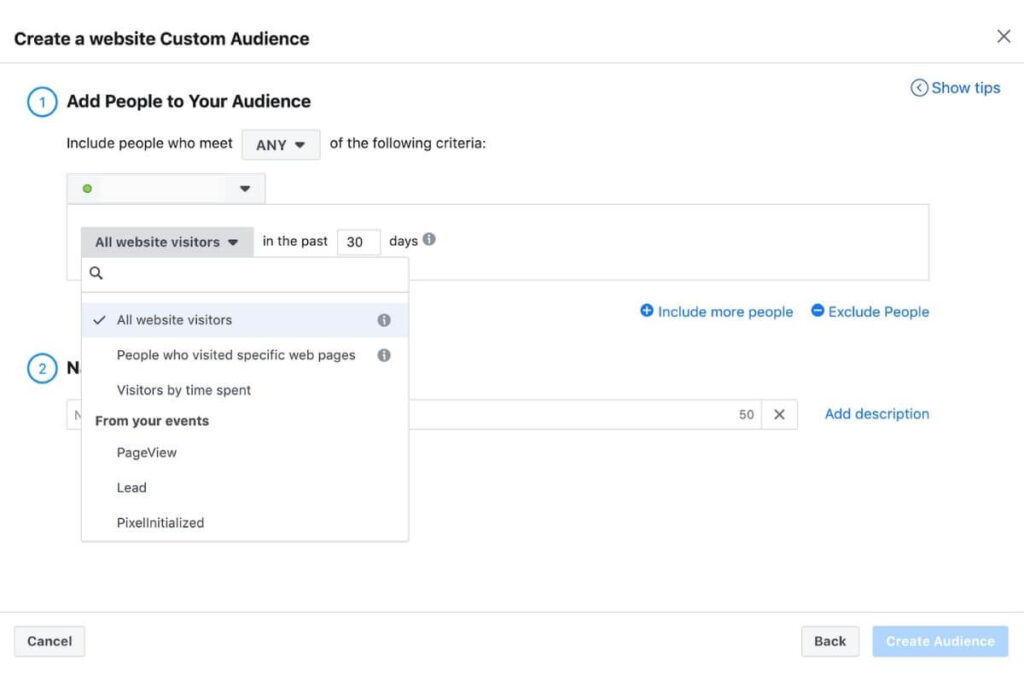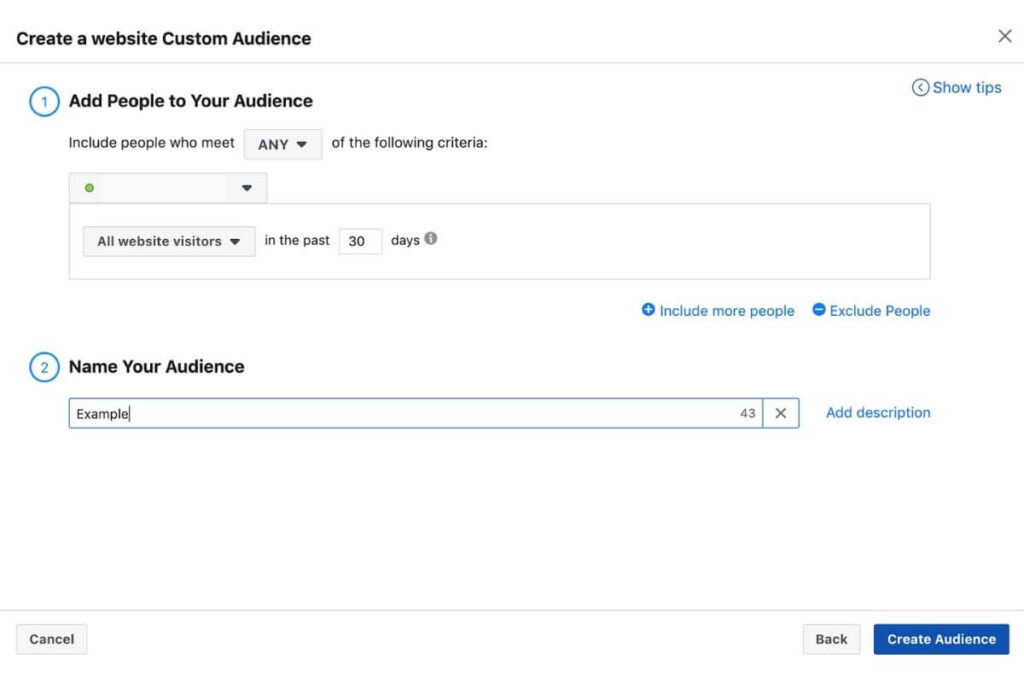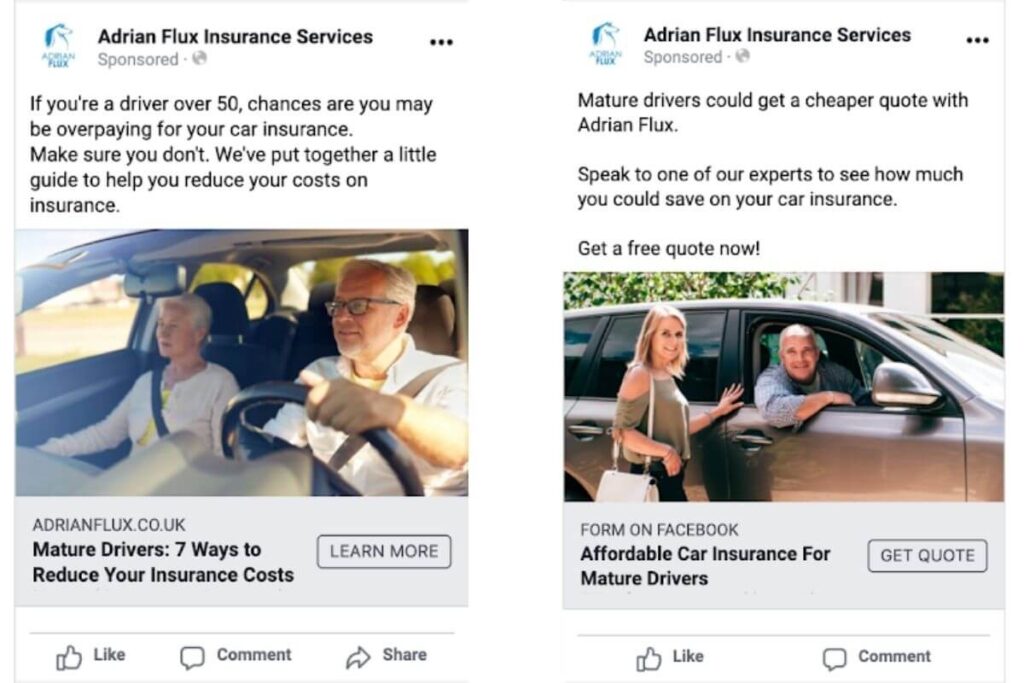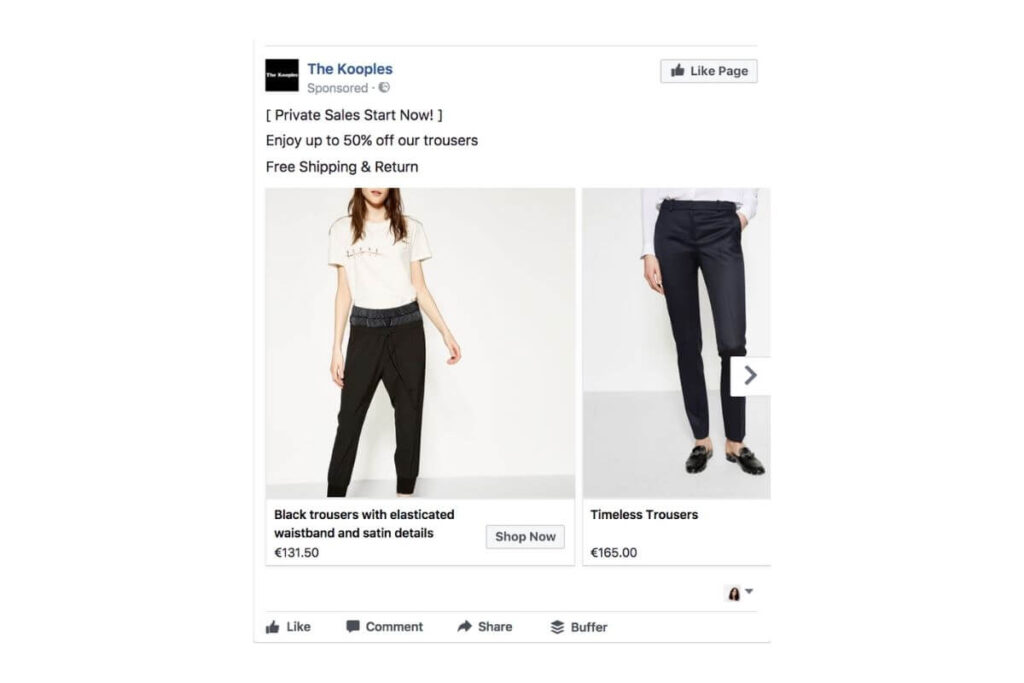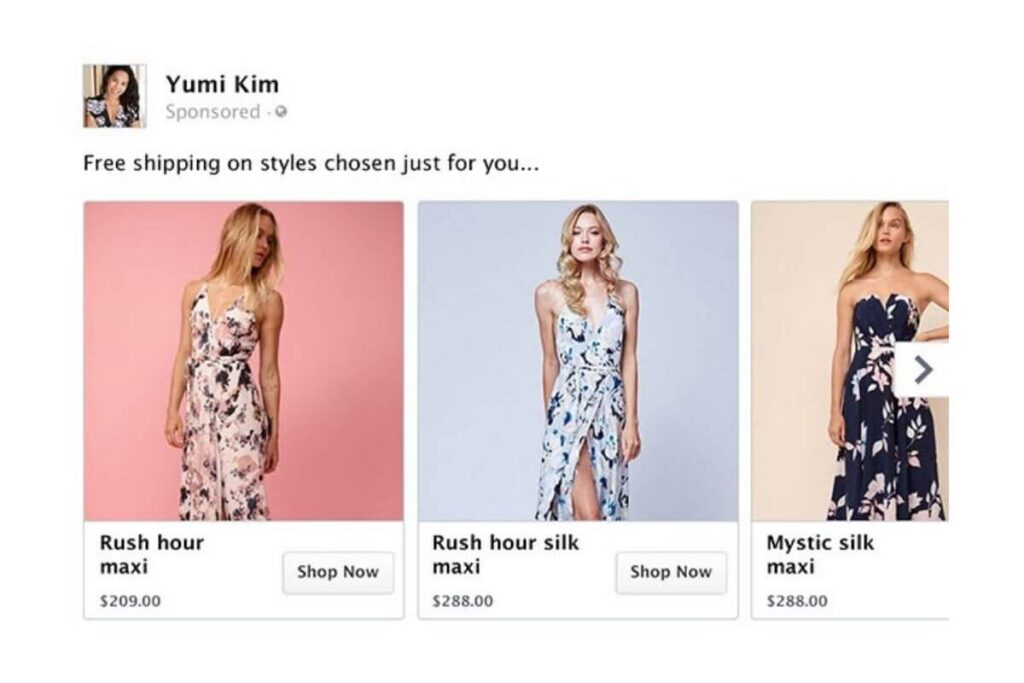Retargeting is certainly nothing new in the marketing world; it is, in fact, an established technique that is largely used by advertisers across a wide range of industries. And that’s for a very good reason: it works. But in order to achieve successful results, precision and attention to detail are necessary requirements.
So keep reading to learn all about retargeting on Facebook as well as tried and tested strategies to help your business win more customers and drive consumer loyalty.
What Is Retargeting?
Retargeting, AKA remarketing, is the process of re-engaging audiences that have already interacted with your brand or shared personal data with you.
On Facebook, this can be done by uploading customer data or by selecting specific engagement criteria in order to create custom audiences in Ads Manager. These audiences can then be used in your advertising campaigns to deliver tailored messages to these users.
Something to keep in mind is, that retargeting audiences can be used to achieve two very valid objectives:
- Retarget existing customers to drive brand loyalty
- Re-engage users who have already interacted with you but not converted yet to drive sales
But whilst it is common practice to retarget users who abandoned your site without completing a purchase, it is perhaps less common to do so for existing customers.
So why invest in loyal customers? You may wonder. The reason is, the Customer Lifetime Value. It is common knowledge that loyal customers are more likely to purchase from you again, but also more likely to try new products from brands they already know. In light of that, it’s obvious that retargeting on Facebook, as well as on other advertising platforms, is a no brainer.
How Do You Create A Retargeting Audience On Facebook?
- As already mentioned, in order to create a retargeting audience you need to log into Ads Manager and navigate to the Audiences section.
- Here you want to click on the ‘Create Audience’ button, then ‘Custom Audience’.
3. At this point you should be able to see a popup giving you different options to customise your audience as needed.
This can be created from your own external sources – examples are website activity and customer lists – or from actions taken by the users on the Facebook platform – these include their engagement with one of your videos, events or Instagram account.
4. Now select the source that is more appropriate for your campaign and goals and enter the conditions that need to be met for the users to qualify and be included in your audience.
In the example below, we have selected Website as the source and we are given the option to target all visitors as well as only those who have visited specific pages and for a certain amount of time.
5. Name your audience, click on ‘Create Audience’ and you are all set!
Now let’s look at some practical examples where using retargeting audiences might prove to be highly effective and why.
Retarget Users Who Engaged With Your Content To Market Your Products To A Qualified Audience
No matter what it is that you are trying to sell when your target audience is familiar with your brand, the chances of you effectively doing that increase. This happens for a variety of reasons; one of them is that your potential customer recognises your brand as established and is more inclined to trust it and eventually complete a purchase.
Content marketing is great to build that authority and put your brand in front of a large, qualified audience without explicitly and directly selling anything to it.
An effective way to combine the power of content marketing with the precision of retargeting audiences is to firstly drive traffic to a specific piece of content on your website (blog, article, competition page etc) and then retarget the users who engaged with it by showing them a more sales-oriented message.
There are two main benefits to using this type of approach; firstly, you work towards building your brand awareness and reputation and secondly, you are more likely to increase your revenue by reducing spending a large amount of your advertising budget on impressions that don’t immediately lead to sales.
In the example below, you can see how we have used a Traffic objective ad on Facebook to engage with mature drivers by promoting a piece of content on the Adrian Flux blog that induces curiosity and invites the user to click through.
In the second stage of our strategy, we have retargeted the users that have shown interest in the content promoted and visited the landing page with a lead generation ad to drive call backs for the insurance provider.
Use Retargeting Audiences To Reward Your Existing Customers
As we have already mentioned, existing customers may be more valuable than your potential customers, so make sure you engage with them on a regular basis to make them feel valued and drive repeat purchases.
Use retargeting audiences on Facebook to show personalised offers and discounts to your customers or exclusive access to sales and events.
Technically speaking, you may want to either upload a customer list or use URL or event-based rules to target exclusively those users who completed a purchase on your website or Facebook and Instagram store.
Below you can see how the clothing brand The Kooples utilises this approach to deliver targeted ads to its existing customers in order to reward them with an exclusive discount.
Re-Engage Cart Abandoners To Drive Sales
As the ecommerce landscape gets more and more crowded and customers are on the lookout for competitive deals delivered smoothly and effortlessly across various channels and devices, so it’s no surprise that cart abandonment rates are on the rise.
So as well as making yourself familiar with the concept of CRO to increase your website’s conversion rate, you may also want to consider using retargeting audiences to re-engage those who have already left your site.
Facebook offers several ways to retarget your users on the platform; if you are selling physical products through a catalogue, your best bet would be to use Facebook Dynamic Ads to show your customers the exact products they have been browsing on your online store or that have added to their cart but eventually didn’t purchase.
Below you can see an example of how Dynamic Product Ads are used in combination with a free delivery incentive to show the user products she’s already shown interest in and drive sales.
If instead, you don’t sell products through your store but services, you can still use retargeting audiences to show tailored messages to your website visitors to induce them to complete their purchase. Consider including introductory offers or special incentives to increase the chances of conversion.
Conclusion
So we have covered the basics of retargeting on Facebook, how to create retargeting audiences on the platform and a few strategies you can implement to make the most of your customer and audience data in what I hope was an exhaustive guide for both marketers and business owners looking to drive more sales via this channel.
Remember, that retargeting audiences is only effective when created from quality sources and that they should be considered as part of a larger and more comprehensive marketing strategy. Keen to learn more about performance marketing? Then visit our blog to access a whole library of content curated by our marketing experts.
 seolounge
seolounge



